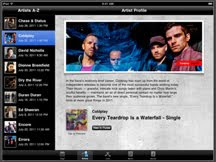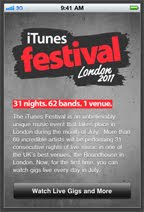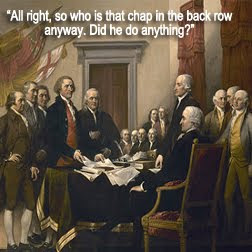According to Alex Steer, writing for The Futures Company, social networks might be losing their way. He has an excellent point.
"...it's a shame that so much of the conversation around the future of social networking focuses on technology. In the last few years we've heard that real-time access, mobile apps, geolocation, near-field communication and other innovations would transform social networking. To some extent they have: many of the changes over the last decade have been technology driven. But what's often missing is the simple, human question: how do we want to interact online, and how is this changing?" — Steer
He's right. The emphasis on technology sometimes forgets the real driver of the social networks, the very people who participate in them. In fact, one could argue that the failings of social networks often leads to the content generated about them.
Consider Mitch Joel's Myth of Reciprocity post. Or Anastasiya Goers' Tips for Social Media Time Famine post. Or Ian Chang's Google+ Circles: Inverted Personal Privacy Dilemma post. All three of them have an unlikely common ground.
While they all read like they are about the failings of people (shortcomings and solutions), the real failure is found within the network. And more than that, they indicate how people are so used to bending to networks (and telling other people how to bend) that we've forgotten technology is meant to serve and not make us subservient.
Six Critical Decisions That Consumers Are Making, From The Futures Company.
1. Scale. The benefits of a large network or the intimacy of a small network.
2. Privacy. The convenience of use and access or safeguards of private data.
3. Specificity. The investment of time on some networks or divided time on many.
4. Pervasiveness. The choice between being always on or to access when we need them.
5. Utility. The perception of seeing networks as places to play or as a professional tools.
6. World view. The choice between reinforcing our habits or challenging our preconceptions.
The Futures Company is largely right in placing the focus on these apparently contradictory pivot points. Their brief, called Status Update: The Six Decisions Shaping The Future Of Online Social Networking, is worth checking out. It may even help some people see social media differently.
In fact, it isn't even until page 34 that it loses me a little. Almost immediately considering all the pivot points, it slips a bit backward for marketing purposes, suggesting marketers learn to bend better. There is nothing wrong with that per se, except that maybe nobody has to bend anything except the tools.
Isn't that the real usefulness of six critical decisions that consumers make? People do not want to accept that choosing this means losing that. They want both at the same time and not necessarily one or the other, subject to change. And that leads to the real question on my mind.
How do we build a social network flexible enough to change with the whim of consumers?
Nobody has done it yet, not really. If they had, social media evangelists wouldn't have the need to rush and build a huge network only to eventually declare they miss the intimacy of having a small one. No one would worry about social media time famine because activity wouldn't feel like a necessity, scored and rated. And privacy wouldn't be as much of a concern, even if the latest effort really aims at convincing us to give up more of it.
Because these aren't the failings of participants. They are the failings of the technological design created with an addictive allure meant to keep us captive as long as possible. And in many ways, it's the traditional media model all over again. There must be a better way.
It seems to me that an on-demand network could consist of intimate, interconnected spheres existing in a larger environment, allowing us to slide back and forth between smaller personal connections and large public gatherings. It would certainly give us an opportunity to go out and challenge our preconceptions while still having a place to feel secure among like-minded people.
And in that regard The Futures Company is right. By paying more attention to people and less attention to technology, we start to see a more fulfilling future for social media, with less bending.
"...it's a shame that so much of the conversation around the future of social networking focuses on technology. In the last few years we've heard that real-time access, mobile apps, geolocation, near-field communication and other innovations would transform social networking. To some extent they have: many of the changes over the last decade have been technology driven. But what's often missing is the simple, human question: how do we want to interact online, and how is this changing?" — Steer
He's right. The emphasis on technology sometimes forgets the real driver of the social networks, the very people who participate in them. In fact, one could argue that the failings of social networks often leads to the content generated about them.
Consider Mitch Joel's Myth of Reciprocity post. Or Anastasiya Goers' Tips for Social Media Time Famine post. Or Ian Chang's Google+ Circles: Inverted Personal Privacy Dilemma post. All three of them have an unlikely common ground.
While they all read like they are about the failings of people (shortcomings and solutions), the real failure is found within the network. And more than that, they indicate how people are so used to bending to networks (and telling other people how to bend) that we've forgotten technology is meant to serve and not make us subservient.
Six Critical Decisions That Consumers Are Making, From The Futures Company.
1. Scale. The benefits of a large network or the intimacy of a small network.
2. Privacy. The convenience of use and access or safeguards of private data.
3. Specificity. The investment of time on some networks or divided time on many.
4. Pervasiveness. The choice between being always on or to access when we need them.
5. Utility. The perception of seeing networks as places to play or as a professional tools.
6. World view. The choice between reinforcing our habits or challenging our preconceptions.
The Futures Company is largely right in placing the focus on these apparently contradictory pivot points. Their brief, called Status Update: The Six Decisions Shaping The Future Of Online Social Networking, is worth checking out. It may even help some people see social media differently.
In fact, it isn't even until page 34 that it loses me a little. Almost immediately considering all the pivot points, it slips a bit backward for marketing purposes, suggesting marketers learn to bend better. There is nothing wrong with that per se, except that maybe nobody has to bend anything except the tools.
Isn't that the real usefulness of six critical decisions that consumers make? People do not want to accept that choosing this means losing that. They want both at the same time and not necessarily one or the other, subject to change. And that leads to the real question on my mind.
How do we build a social network flexible enough to change with the whim of consumers?
Nobody has done it yet, not really. If they had, social media evangelists wouldn't have the need to rush and build a huge network only to eventually declare they miss the intimacy of having a small one. No one would worry about social media time famine because activity wouldn't feel like a necessity, scored and rated. And privacy wouldn't be as much of a concern, even if the latest effort really aims at convincing us to give up more of it.
Because these aren't the failings of participants. They are the failings of the technological design created with an addictive allure meant to keep us captive as long as possible. And in many ways, it's the traditional media model all over again. There must be a better way.
It seems to me that an on-demand network could consist of intimate, interconnected spheres existing in a larger environment, allowing us to slide back and forth between smaller personal connections and large public gatherings. It would certainly give us an opportunity to go out and challenge our preconceptions while still having a place to feel secure among like-minded people.
And in that regard The Futures Company is right. By paying more attention to people and less attention to technology, we start to see a more fulfilling future for social media, with less bending.










































